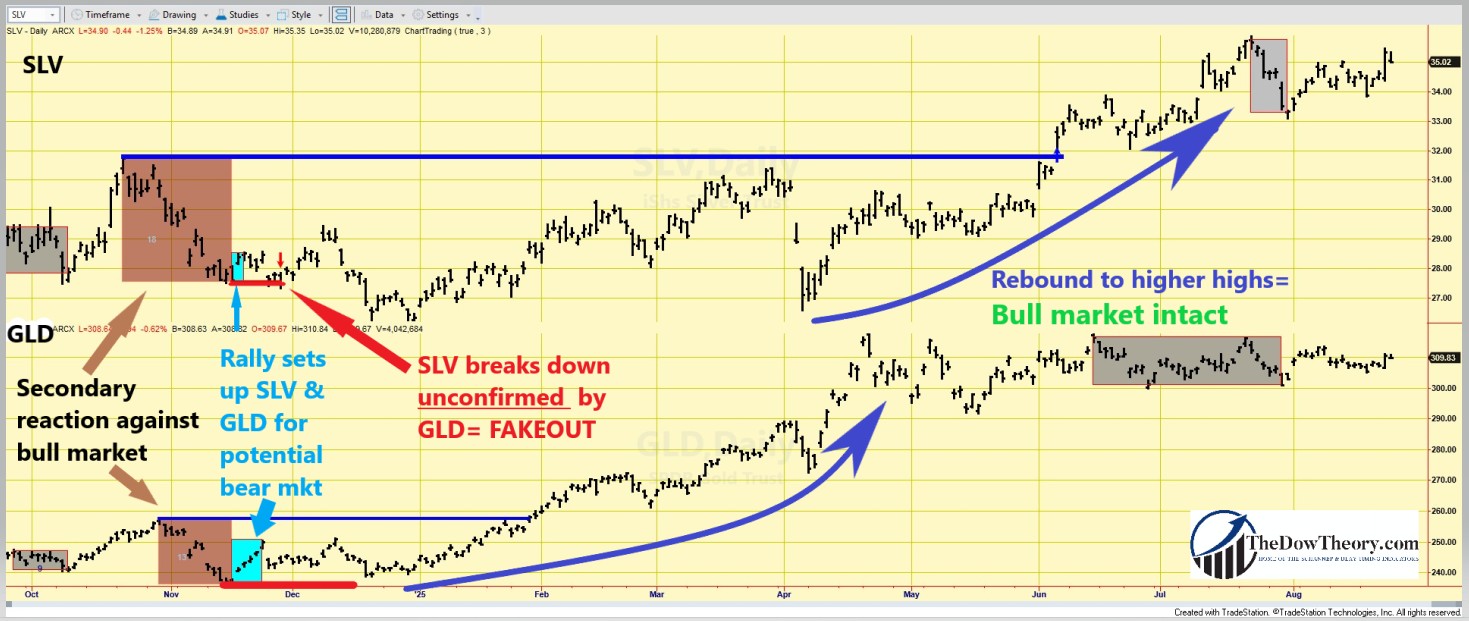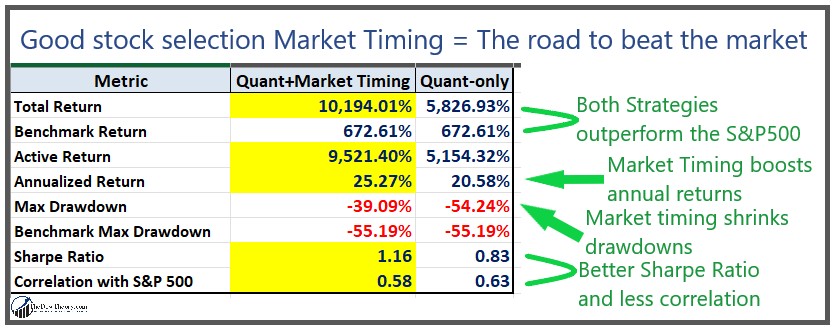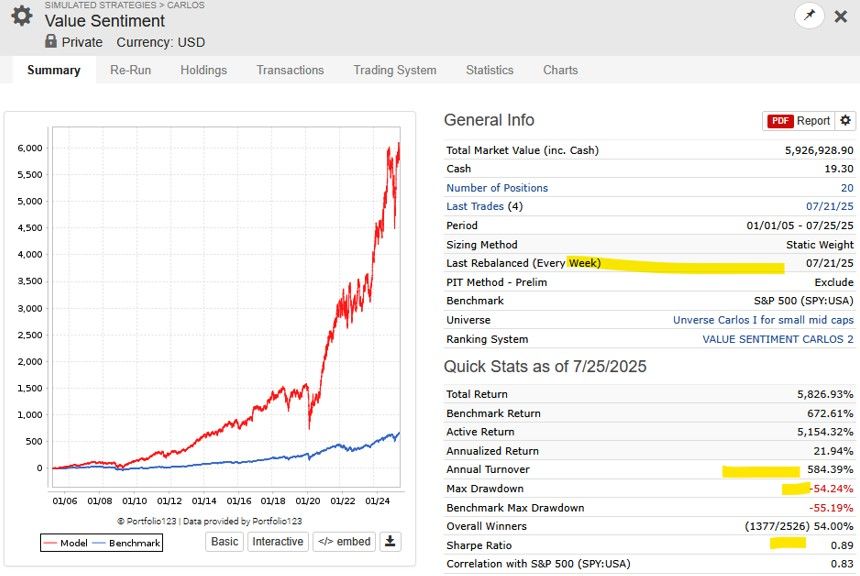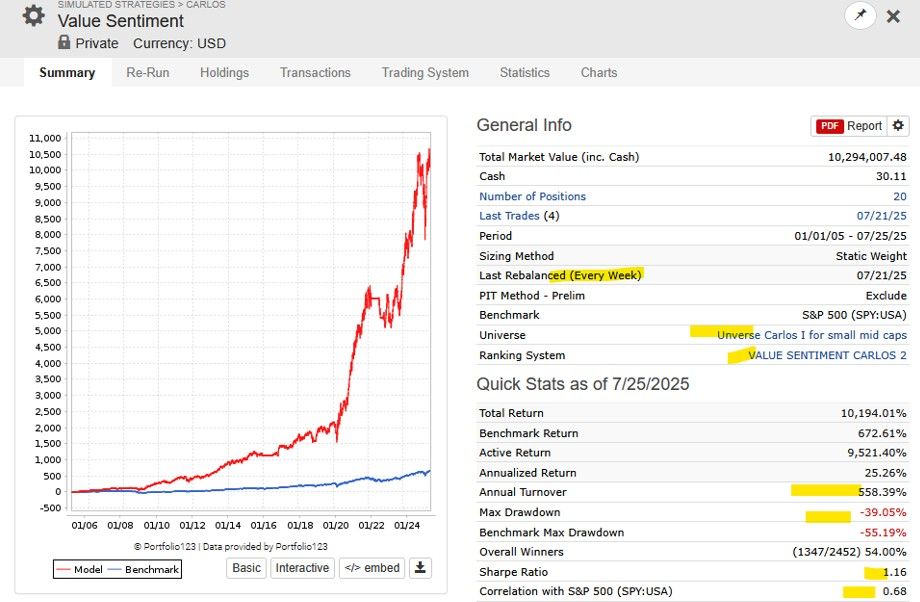The melt up for precious metals continues
Overview: What was just a secondary reaction against the bullish trend turned out to be nothing, as higher confirmed highs by SIL and GDX have reaffirmed the primary bull market.
The trend in gold and silver is so powerful that their pullbacks didn’t even count as secondary reactions.
So, bullishness in the precious metals is pervasive.
General Remarks:
In this post, I elaborate extensively on the rationale behind employing two alternative definitions to evaluate secondary reactions.
SIL refers to the Silver Miners ETF. More information about SIL can be found HERE.
GDX refers to the Gold Miners ETF. More information about GDX can be found HERE.
A) Market situation if one appraises secondary reactions not bound by the three weeks and 1/3 retracement dogma.
As I explained in this post, the primary trend was signaled as bullish on 6/2/25.
Following the 10/16/25 highs for both SIL and GDX (Step #1 in the Table below), there has been a pullback until 11/04/25 (Step #2). Such a pullback meets the time and extent requirement for a secondary (bearish) reaction against the still-existing primary bull market.
The rally that started at the 11/04/25 (SIL) lows and lasted until 11/10/25 set up both ETFs for a potential primary bear-market signal (Step #3).
The rally continued higher until 12/11/25 when both SIL and GDX surpassed their 10/15/25 closing highs.
The implications of the breakout of the 10/16/25 highs are as follows:
(a) the secondary (bearish) reaction against the bull market has been terminated; (b) the setup for a potential bear market signal has been canceled, and
(c) the primary bull market has been reconfirmed.
The table below contains the key prices and dates:
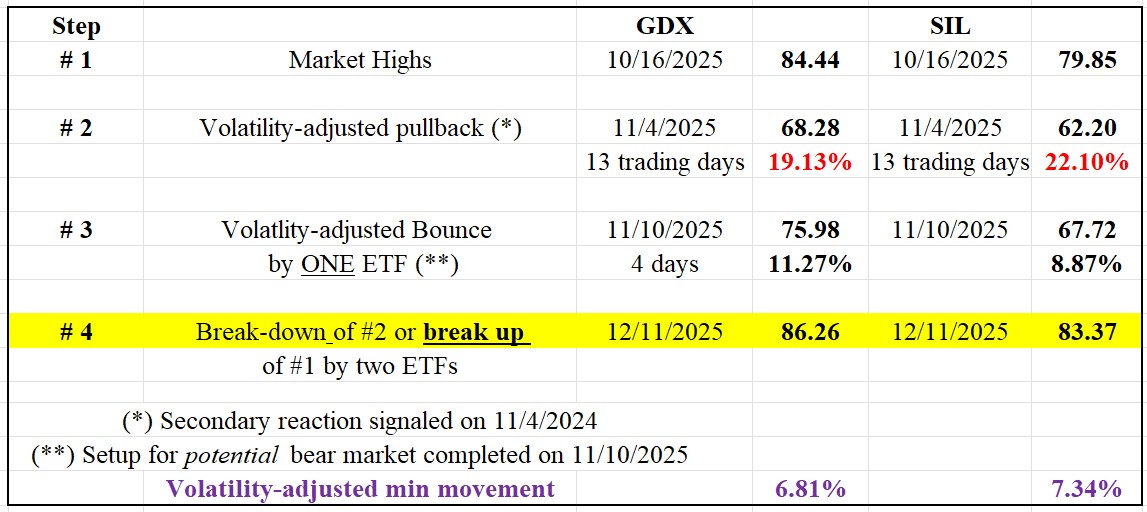
The chart below illustrates the latest price movements. The brown rectangles mark the secondary reaction against the primary bull market (Step #2). The blue rectangles indicate the rally (Step #3), positioning GDX and SIL for a potential bear market signal. The red horizontal lines show the secondary reaction lows (Step #2), where a confirmed break would signal a new primary bear market. Meanwhile, the blue horizontal lines highlight the last recorded bull market highs (Step #1), whose confirmed breakout reconfirmed the primary bull market.

So, now the primary and secondary trends are bullish.
B) Market situation if one sticks to the traditional interpretation, demanding more than three weeks and 1/3 confirmed retracement to declare a secondary reaction.
I explained in this post that the primary trend was signaled as bullish on 6/2/25.
The current pullback has not reached 15 confirmed days by both ETFs, so there was no secondary reaction against the bull market.
So, the primary and secondary trends are bullish under the “slower” appraisal of the Dow Theory.
Sincerely,
Manuel Blay
Editor of thedowtheory.com

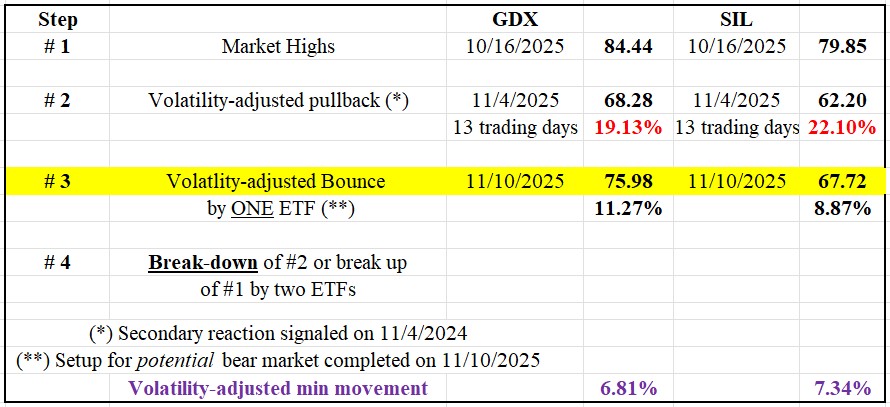
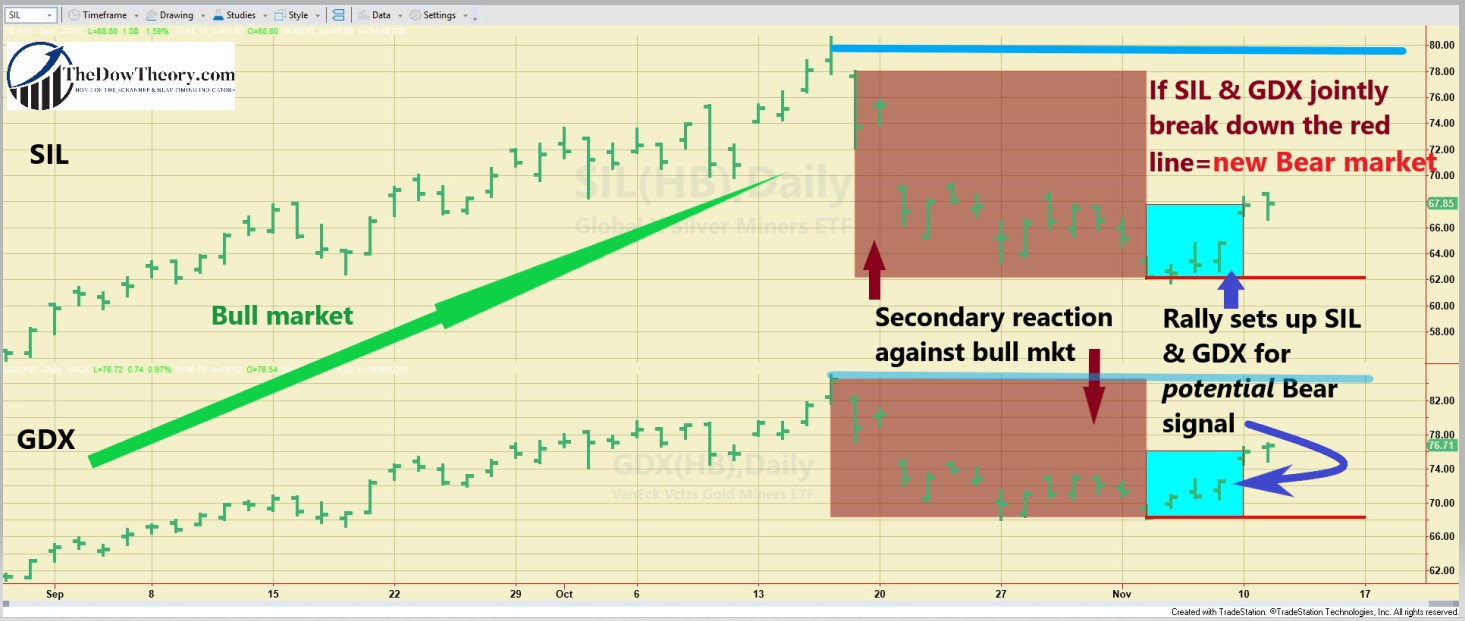

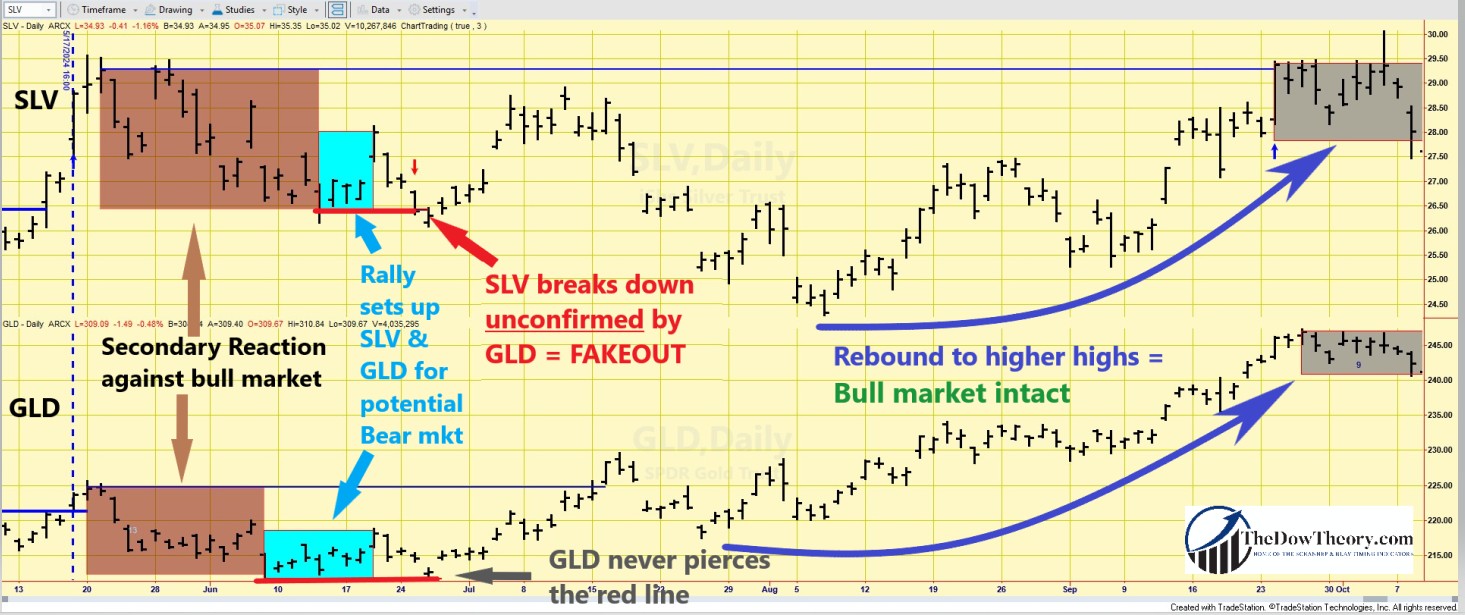 Second “fakeout” Breakdown: November 2024
Second “fakeout” Breakdown: November 2024